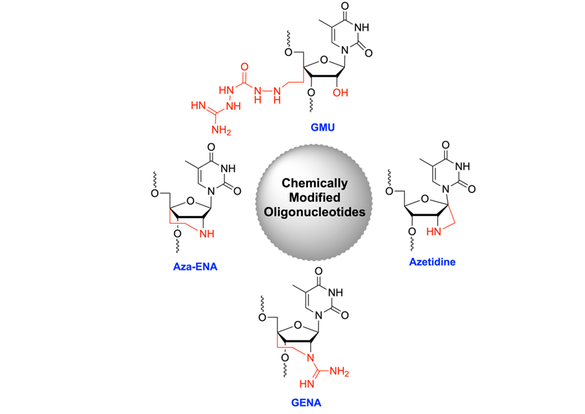Chemically modified RNAi drug design

Our project
(Figure obove: Structural design of chemically modified oligonucleotides with enhanced enzymatic stability and bioactivity.)
For designing effective antisense and RNAi drugs, structural and chemical modifications are necessary to improve the therapeutic potential of oligonucleotides drugs. In our laboratory, we use synthetic organic chemistry to create new chemically modified DNA and RNA molecules by employing multistep synthetic organic chemistry to generate designer drugs that are more potent than traditional drugs. Such modifications not only improve the nuclease stability of drugs in human serum, but also improve the drug efficacy by enhancing the biochemical reaction. These chemically modified interfering RNA molecules also modulate thermodynamic asymmetry of the duplexes which facilitate selective recruitment of the desired strand within the RNA induced silencing complex (RISC). Such a chemical design of modified siRNA that can favourably interact with the enzymes within the RISC complex and modulate RNAi machinery is of great significance to develop next-generation RNAi therapeutics. In our laboratory, we are constantly exploring strategies to manipulate the nucleic acid structure to improve the therapeutic index of the drug molecules.
Publication
- Barman, J.; Gurav, D.; Oommen, O. P.; Varghese, O. P. 2′-N-Guanidino,4′-C-ethylene bridged thymidine (GENA-T) modified oligonucleotide exhibits triplex formation with excellent enzymatic stability. RSC Advances 2015, 5, 12257-12260. http://dx.doi.org/10.1039/C4RA14721A
